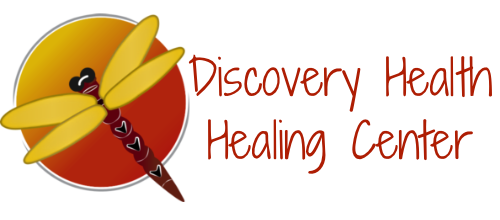Overcoming the Fear of Getting Breast Cancer: Penny’s Story
Follow along with Dr.Kelly and Penny as Penny shares her story. The fear of breast cancer can be overwhelming, especially when someone else in your family has had it. Follow along with Pennys Health Journey to find out what steps she is taking to find out her risks and decrease them.
Breast cancer develops when cells in the breast grow uncontrollably, forming a tumor. The exact cause of breast cancer is not entirely understood, but several factors can increase the likelihood of developing the disease. These factors include genetic mutations, hormonal influences, lifestyle choices, and environmental exposures.
Key Factors Leading to Breast Cancer:
Genetic Mutations:
- Inherited Mutations: About 5-10% of breast cancers are linked to inherited genetic mutations, such as BRCA1 and BRCA2. Women with these mutations have a higher lifetime risk of developing breast cancer.
- Other Genetic Mutations: Mutations in genes like TP53, CHEK2, and PTEN can also increase breast cancer risk.
Hormonal Influences:
- Estrogen and Progesterone: Prolonged exposure to estrogen and progesterone, such as starting menstruation early, late menopause, or hormone replacement therapy, can increase breast cancer risk.
- Hormonal Birth Control: Long-term use of hormonal contraceptives may slightly increase breast cancer risk.
Lifestyle Factors:
- Diet and Obesity: A high-fat diet, obesity, and sedentary lifestyle can contribute to breast cancer risk. Fat cells produce estrogen, which can promote breast cancer cell growth.
- Alcohol Consumption: Regular alcohol intake is associated with an increased risk of breast cancer. Even moderate drinking can raise risk levels.
- Smoking: Tobacco use is linked to a higher risk of breast cancer, especially in younger, premenopausal women.
Environmental Exposures:
- Radiation Exposure: Exposure to radiation, especially at a young age (e.g., radiation therapy for another cancer), can increase the risk of breast cancer.
- Chemical Exposures: Certain chemicals, such as those in pesticides, plastics, and industrial pollutants, may disrupt hormonal balance and contribute to cancer risk.
Reproductive History:
- Childbearing and Breastfeeding: Women who have never had children or had their first child after age 30 have a higher risk of breast cancer. Breastfeeding can lower the risk.
- Menstrual History: Early onset of menstruation (before age 12) and late menopause (after age 55) increase the risk due to longer exposure to estrogen.
Age and Gender:
- Age: The risk of breast cancer increases with age, with most cases occurring in women over 50.
- Gender: Although men can develop breast cancer, it is much more common in women.
Family History:
- Hereditary Factors: Having a first-degree relative (mother, sister, or daughter) with breast cancer increases your risk, especially if the cancer occurred at a young age.
Breast Density:
- Dense Breast Tissue: Women with dense breast tissue have a higher risk of breast cancer and may also have a more challenging time detecting tumors through mammograms.
Personal History of Breast Conditions:
- Previous Breast Cancer: Women who have had breast cancer previously are at higher risk of developing it again.
- Benign Breast Conditions: Certain non-cancerous breast conditions, such as atypical hyperplasia, can increase breast cancer risk.
Ethnicity and Race:
- Ethnic Variations: Certain ethnicities may have a higher or lower risk of breast cancer. For example, Caucasian women are more likely to develop breast cancer than African American women, but African American women are more likely to die from the disease due to higher rates of aggressive tumor types.
How Breast Cancer Develops:
- Cellular Changes: Breast cancer begins when cells in the breast start to grow abnormally. These changes are often due to mutations in DNA, which can be inherited or acquired over time.
- Tumor Formation: The abnormal cells divide and grow more rapidly than normal cells, forming a mass or lump (tumor) in the breast.
- Invasion and Spread: If left untreated, breast cancer cells can invade surrounding breast tissue and spread (metastasize) to other parts of the body, such as the lymph nodes, bones, liver, or lungs.
Steps to Lower Risk and Promote Breast Health:
Regular Screening:
- Mammograms: Follow recommended guidelines for mammography to detect breast cancer early when it is most treatable.
- Self-Exams: Perform regular breast self-exams to become familiar with your breasts and detect any changes early.
Healthy Diet and Exercise:
- Balanced Diet: Eat a diet rich in fruits, vegetables, whole grains, and lean proteins to support overall health.
- Physical Activity: Engage in regular exercise to maintain a healthy weight and reduce cancer risk.
Limit Alcohol and Avoid Tobacco:
- Alcohol: Limit alcohol consumption to no more than one drink per day.
- Smoking: Avoid smoking and exposure to secondhand smoke.
Hormonal Management:
- Evaluate HRT: Discuss the risks and benefits of hormone replacement therapy with your doctor, especially if you are at higher risk for breast cancer.
- Contraceptive Choices: Consider non-hormonal methods of contraception if concerned about hormonal risk factors.
Breastfeeding:
- Breastfeed if Possible: Breastfeeding for several months can help reduce breast cancer risk.
Maintain a Healthy Weight:
- Weight Management: Focus on maintaining a healthy weight through diet and exercise, especially after menopause.
Environmental Awareness:
- Minimize Toxin Exposure: Avoid exposure to harmful chemicals and pollutants that may contribute to cancer risk.
Genetic Counseling and Testing:
- Risk Assessment: Consider genetic counseling and testing if you have a strong family history of breast cancer.
By understanding the factors that contribute to breast cancer risk and taking proactive steps to mitigate these risks, you can improve your overall breast health and reduce the likelihood of developing breast cancer. Regular check-ups and staying informed about breast health are crucial components of effective breast cancer prevention.
